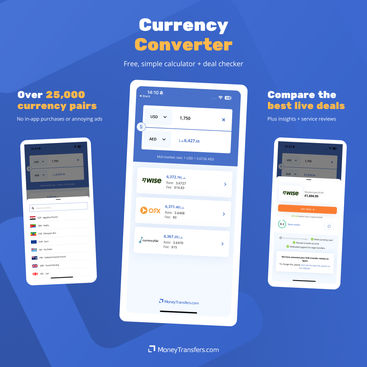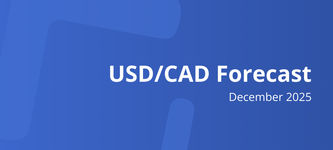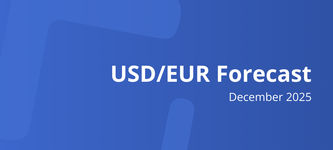USD to COP Forecast - January 2026
Right now, in July 2025, 1 U.S. dollar buys more Colombian pesos (COP) than it did earlier this year. It is currently trading at 3770.75.
The Colombian peso has weakened significantly since mid-2024, and that trend may continue into July.
This means your dollars could stretch even further in the coming weeks if you're sending money to Colombia.
Search Now & Save On Your Transfer
What is likely to happen to USD/COP in January 2026
Expect moderate peso weakness and continued ups and downs over the next month. Watch the 4150 to 4200 zone on the upside and 4000 on the downside. If you plan to send money, periods when the rate is above 4150 should offer better value.
USD to COP: Where It Stands
The Colombian peso has recently weakened after losing the strong dollar inflows that had been supporting it.
With fewer dollars being sold in the local market, the USD to COP rate has been drifting higher, meaning one dollar now buys more pesos than it did a few weeks ago.
Market participants are also seeing more day to day volatility because liquidity has dropped.
What’s Driving USD to COP?
The peso is being pulled mainly by three factors:
Local dollar flows have decreased. When fewer dollars enter the market, the peso tends to weaken.
Global expectations for US interest rates remain firm. If investors think the United States will keep rates higher for longer, the dollar stays strong.
Colombia’s proposed 2025 Financing Law is creating uncertainty. Higher taxes on investors and businesses could reduce foreign investment, which usually puts pressure on the peso.
On top of that, global climate finance discussions at COP30 highlight long term needs for funding in emerging markets. While this does not immediately move currencies, it can influence investor sentiment toward countries like Colombia, especially if financing delays raise perceived risk.
What Do the Charts Say?
Traders are watching two key levels:
Support around 4000 pesos per dollar. This is the level where buyers tend to step in and slow further COP strengthening.
Resistance between 4150 and 4200. This is where the market has struggled to push higher in recent weeks and could act as a ceiling.
If USD to COP moves above 4200, the next target traders talk about is roughly 4300. If it falls below 4000, momentum could push toward 3900.
What to Watch in January 2026
The events most likely to influence the rate soon.
US Federal Reserve updates. Any signs that rate cuts will be delayed typically strengthen the dollar.
Colombia’s tax reform progress. Foreign investors are watching closely because higher taxes may reduce appetite for local assets.
Local dollar flow patterns. If corporate or institutional players begin selling dollars again, the peso may regain strength.
Global risk sentiment. If markets become nervous, investors usually favor the dollar over emerging market currencies like the peso.
Risks Ahead
Key issues that could shake the outlook.
A drop in foreign investment if the tax reform passes as proposed.
A stronger US dollar if inflation proves sticky.
More volatility if liquidity remains thin in Colombia’s currency market.
Delays in global climate finance that reduce investor appetite for emerging markets.
What This Means If You’re Sending USD to COP Abroad
The recent trend points toward a slightly weaker Colombian peso. This means you may get more pesos for each dollar in the near term. However, because volatility is high, the rate could swing quickly. If USD to COP moves above 4200, that would be a favorable moment for sending money because your dollars stretch further. If it drops toward 4000 or below, you would receive fewer pesos.
Live USD to COP exchange rates
Converting USD to COP
If you are planning to send USD to Colombia, you need to pick the right money transfer company to get the most COP on the other end.
Depending on your needs, it's best to use one of the following companies in January:




History of the USD to COP pair
The history of the USD to COP exchange rate can be traced from the historical ties between the US and Colombia.
The records show that Colombia initially used the Spanish real until 1820 and moved to Colombia real post-1820 till 1837.
After 1837, the Colombian Peso became the primary unit of currency.
At that time, Colombia was involved in trading activities with the US. The US dollar was introduced in 1792 when the US Mint started operations.
A lot has happened since the early days of the USD/COP exchange rate, including the end of the gold standard in 1971.
As shown below, the USD to COP pair has generally been in a strong bullish trend over the years.
The only time when the Colombian Peso strengthened against the US dollar was between 2002 and ~2012.
This period coincided with the end of the dot com bubble and the Global Financial Crisis (GFC) of 2008/2009.
Since 2012, the USD to COP pair has been in a broadly upward trend that saw a rise from a low of ~1,650 to over 5,000.
| Date | 1 US Dollar in COP |
|---|---|
| Dec 24, 2025 | 3743.800000 COP |
| Dec 25, 2025 | 3743.800000 COP |
| Dec 26, 2025 | 3697.000000 COP |
| Dec 27, 2025 | 3697.000000 COP |
| Dec 28, 2025 | 3697.000000 COP |
| Dec 29, 2025 | 3731.150000 COP |
| Dec 30, 2025 | 3742.210000 COP |
| Dec 31, 2025 | 3769.960000 COP |
| Jan 01, 2026 | 3769.960000 COP |
| Jan 02, 2026 | 3770.750000 COP |

Our handy, modern currency app lets you:
Instantly convert 25,000+ currency pairs
Compare live transfer deals
Get reviews & insights
Our app is free for mobiles and tablets, with no intrusive ads or in-app purchases.
Related Content




Contributors





